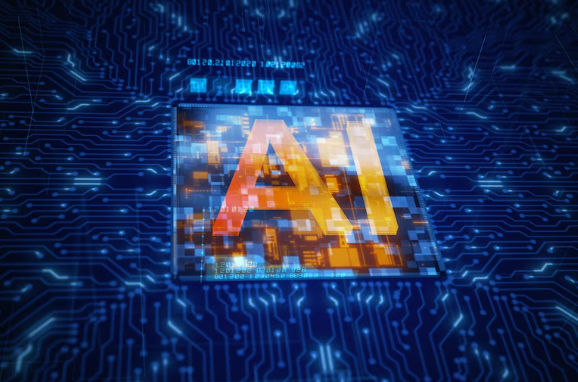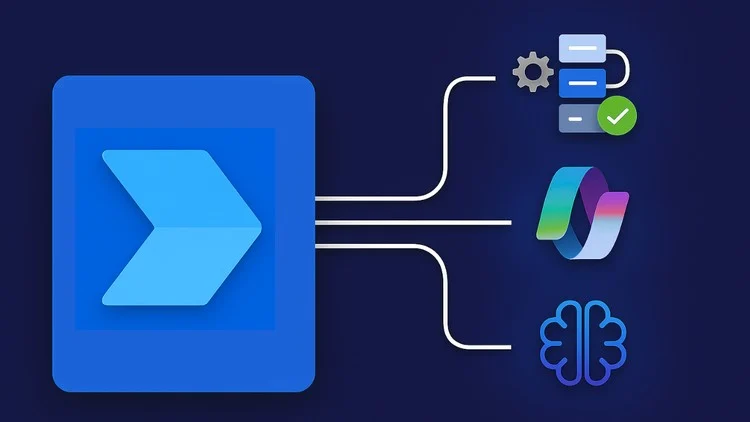Automated CI/CD for AI SaaS accelerates software delivery by integrating continuous integration and deployment with AI-driven processes. It minimizes manual intervention by automating testing, code quality checks, and deployment, ensuring consistent and reliable releases. This approach improves efficiency, enhances code quality, and reduces deployment risks in complex AI applications.
By leveraging AI and machine learning, CI/CD pipelines can predict deployment outcomes and self-heal when issues occur, increasing system stability. These capabilities allow development teams to focus on innovation rather than maintenance, streamlining the delivery of AI-powered SaaS products.
Organizations adopting automated CI/CD for AI SaaS benefit from faster iteration cycles and higher confidence in release quality. The integration of AI into these pipelines transforms traditional workflows into intelligent automation systems tailored to the unique demands of AI software development.
Understanding Automated CI/CD for AI SaaS

Automated CI/CD pipelines in AI SaaS combine continuous integration and delivery with AI-specific workflows, ensuring faster development iterations and reliable deployment. This process helps maintain professional-grade quality while handling scalable infrastructure demands and minimizing manual coding efforts.
Defining CI/CD in the AI SaaS Ecosystem
CI/CD in AI SaaS refers to the automated workflow that integrates code changes, tests AI models, and deploys updates to production without manual intervention. It supports zero-code needed solutions by automating model retraining, validation, and feature updates efficiently.
The pipeline manages both traditional software and AI components like data preprocessing and model evaluation. It ensures that updates to AI algorithms or APIs are tested for reproducibility and accuracy before release. This approach enhances collaboration among data scientists, developers, and operations teams.
Benefits for AI-Powered Applications
Automated CI/CD improves deployment speed and consistency, reducing the risk of errors in AI SaaS applications. It provides professional-grade quality through continuous testing of AI models against varying datasets and edge cases.
Scalable infrastructure support ensures resources adjust dynamically to model training and deployment demands, maintaining performance under growing user load. This scalability is vital for SaaS platforms requiring high availability and low latency in AI services.
The process also simplifies management by automating routine tasks like version control and rollback, allowing teams to focus on model innovation rather than deployment logistics.
Key Challenges in Automation
Automating CI/CD for AI SaaS faces challenges related to handling data variability and complex dependency management. Unlike traditional software, AI models require ongoing validation against new data, complicating automated testing pipelines.
Ensuring reproducibility of results can be difficult because model training often depends on evolving datasets and external tools. Additionally, integrating scalable infrastructure while maintaining cost efficiency requires careful orchestration.
Security and compliance are other concerns, as sensitive data must be protected through every step of the pipeline. Addressing these challenges is crucial to delivering reliable, automated CI/CD workflows for AI SaaS platforms.
Core Components of an AI SaaS CI/CD Pipeline
An AI SaaS CI/CD pipeline requires precise orchestration of testing, deployment, and data handling to maintain reliability and compliance. Automation plays a critical role, especially when managing complex AI models and sensitive data.
Automated Testing for AI Workloads
Automated testing in AI SaaS pipelines extends beyond traditional code validation. It includes validating AI-generated outputs, model behavior under different data scenarios, and performance metrics. Testing pipelines often integrate unit tests, integration tests, and specialized AI tests such as data drift detection and bias evaluation.
Security checks aligned with GDPR and SOC2 ensure compliance, focusing on data protection and access controls during testing. Automated pipelines typically support a one-click build that runs these tests consistently, reducing manual errors. Expert backup mechanisms can trigger alerts or rollback to stable states if tests fail, maintaining system stability and data integrity.
Model Versioning and Continuous Deployment
Model versioning is essential for tracking changes in AI models, enabling rollback and reproducibility. The pipeline incorporates automated version control systems for models and associated code, commonly using tools like MLflow or DVC. Continuous deployment applies automated workflows that take validated models and deploy them to production environments with minimal downtime.
This process supports an AI-generated blueprint, which documents model configurations and deployment parameters. Automation here ensures consistency and reduces manual intervention, while compliance with regulatory frameworks is maintained by including security checks before deployment. Deployment success and monitoring feedback loops are integrated to adapt models dynamically.
Data Management and Integration
Data is the foundation of AI SaaS, requiring rigorous management and seamless integration for continuous training and inference. The CI/CD pipeline includes mechanisms for validating data quality, schema, and freshness before it enters the training pipeline. Persistent storage solutions are structured to support scalable access, commonly using databases like PostgreSQL and Redis.
Integrating new datasets triggers automated workflows that update models or trigger retraining. Data lineage and audit trails are essential for compliance, backing up processes with expert oversight to detect anomalies. This structure allows for efficient handling of large datasets while preserving compliance and security standards within the pipeline.
Designing Effective Automated Workflows
Automated workflows in CI/CD for AI SaaS demand precise control over task sequencing, consistent environment replication, and efficient pipeline execution. This ensures rapid, reliable model updates while reducing failure risks and resource waste.
Workflow Orchestration Tools
Workflow orchestration tools coordinate and automate tasks like code integration, testing, and deployment. Popular tools include Jenkins, GitHub Actions, and Apache Airflow. These tools support complex workflows with conditional steps and parallel execution.
In AI SaaS, orchestration must handle model training, validation, and deployment seamlessly. Integration with cloud services such as AWS Lambda or Google Cloud Functions allows scalable execution. Orchestrators often trigger downstream tasks automatically based on success or failure status to maintain pipeline integrity.
Integrating deployment platforms like Vercel or cloud providers (AWS, GCP) into orchestration tools enables smooth delivery of frontend or backend components alongside AI models. Proper orchestration reduces manual intervention and accelerates continuous delivery.
Environment Management Strategies
Managing consistent environments is critical for reproducibility and stability. Containerization using Docker standardizes dependencies across local, staging, and production setups, minimizing “it works on my machine” issues.
Infrastructure as Code (IaC) tools such as Terraform or AWS CloudFormation automate provisioning of cloud resources. This ensures environments used for training or serving are identical and version-controlled.
For AI SaaS, managing GPU-enabled environments in AWS or GCP demands special attention to compatible drivers and libraries. Using managed services like AWS SageMaker or Google AI Platform can help in environment uniformity for model deployment.
Secrets management and environment variable injection are necessary to safeguard credentials and API keys during deployment, reducing risks in automated pipelines.
CI/CD Pipeline Optimization
Pipeline optimization focuses on reducing build times, catching errors early, and improving feedback loops. Automated tests must cover unit, integration, and model performance checks with tools like pytest and specialized ML testing frameworks.
Incremental builds and caching strategies save resources by reusing previous computations. For example, model artifacts can be cached unless source data or code changes.
Deployments should follow staged rollouts with feature flags or canary releases on platforms like AWS or Vercel to minimize disruption. Monitoring tools integrated into pipelines provide real-time insights into failures or performance bottlenecks.
Incorporating AI-driven code quality analysis and predictive deployment analytics enhances pipeline efficiency by automating decision-making on build success and failure risks.
No-Code Platforms Enabling Automated CI/CD
No-code platforms are transforming how AI SaaS teams implement automated CI/CD by removing traditional coding barriers. These tools enable faster deployment cycles while maintaining control over complex workflows.
Overview of No-Code Solutions
No-code platforms provide visual interfaces to design, build, and automate CI/CD pipelines without scripting. They reduce reliance on DevOps specialists by allowing users to drag and drop components, configure workflows, and manage testing and deployment.
These platforms typically support integrations with source control, testing tools, and cloud environments, enabling end-to-end automation. The goal is to accelerate delivery while minimizing manual errors and setup time.
They also often include built-in monitoring, feedback loops, and rollback capabilities, which are crucial for maintaining stable AI SaaS releases.
How Platforms Like imagine.bo Simplify CI/CD
Imagine.bo stands out by offering a no-code environment tailored to turning ideas into fully functioning apps with seamless CI/CD automation. It enables users to manage the entire software delivery lifecycle visually.
The platform supports multiple client projects in one workspace, making it ideal for agencies and SaaS founders handling diverse releases. Users can configure automated triggers for builds, tests, and deployments without writing any code.
Imagine.bo integrates with major cloud providers and version control systems, ensuring flexibility and scalability. This setup reduces dependencies on DevOps teams, speeding up delivery while maintaining quality and security.
Use Cases for Founders and Agencies
Founders with limited coding experience use no-code CI/CD platforms to prototype and launch AI SaaS products rapidly, focusing on product-market fit instead of infrastructure.
Agencies leverage these platforms to manage multiple client projects simultaneously, automating repetitive deployment tasks and improving turnaround times. They can set up standardized pipelines to ensure consistency and reduce human error.
Both groups benefit from easier collaboration between technical and non-technical stakeholders. Automation improves release frequency while lowering operational overhead, making no-code CI/CD a practical choice for small to mid-sized AI SaaS teams.
Security, Compliance, and Monitoring in Automated Pipelines
Security, compliance, and monitoring are essential components within automated CI/CD pipelines for AI SaaS platforms. They prevent vulnerabilities, ensure regulatory adherence, and provide ongoing visibility into system health and risk exposure. Automation enhances these processes, enabling faster detection and resolution of issues without manual intervention.
Implementing Built-In Security Checks
Automated CI/CD pipelines integrate security checks early in the development lifecycle. These include static application security testing (SAST), dynamic application security testing (DAST), and secret scanning to catch vulnerabilities before deployment.
Security checks align with compliance frameworks such as GDPR and SOC 2. For example, scanning ensures no sensitive data or secrets are exposed in code repositories or container images. Automated policy enforcement blocks non-compliant code from progressing through the pipeline.
Using infrastructure as code (IaC) scanning identifies misconfigurations that could lead to security gaps in cloud environments. This proactive approach minimizes risk by embedding control checks throughout CI/CD stages.
Ensuring Compliance for AI SaaS
AI SaaS platforms face stringent regulatory and industry standards. Continuous compliance requires integrating audit-ready controls seamlessly within development and operations workflows.
Automation streamlines compliance tasks like evidence collection, configuration validation, and security assessments. This removes human error and speeds up the demonstration of compliance during audits.
Compliance automation tools often generate real-time reports aligned with frameworks like SOC 2 or GDPR. These reports help teams monitor adherence and quickly address gaps related to data privacy, access controls, and change management.
Embedding compliance within DevSecOps enables AI SaaS providers to meet evolving requirements without slowing release velocity or innovation.
Automation for Analytics and Monitoring
Automated pipelines generate detailed operational data, feeding analytics dashboards for performance and security monitoring. These dashboards display metrics like vulnerability trends, scan success rates, and compliance status.
Real-time analytics support early threat detection and incident response by highlighting anomalies or deviations. Automated alerts notify engineers of potential risks before they impact production.
Monitoring extends beyond code to infrastructure and cloud services, ensuring continuous visibility across the entire AI SaaS environment. AI/ML-driven analysis can further optimize detection by identifying complex patterns in large data sets.
This ongoing insight enables teams to maintain resilience and trust in their automated CI/CD processes.
Scaling and Deployment Strategies
Effective scaling and deployment for AI SaaS requires a combination of robust infrastructure, automated traffic management, and flexible cloud strategies. Each component contributes to maintaining professional-grade quality and operational reliability under varying workloads.
Scalable Infrastructure for AI SaaS
AI SaaS platforms rely heavily on scalable infrastructure to handle complex model training, inference workloads, and real-time data processing. Using container orchestration systems like Kubernetes enables dynamic resource allocation based on demand.
Infrastructure must support rapid scaling of CPUs, GPUs, and memory to meet AI-specific processing needs. Employing infrastructure-as-code tools improves consistency and repeatability across environments.
Implementing monitoring and alerting on key metrics such as latency, throughput, and resource utilization helps avoid bottlenecks. This ensures the platform can maintain performance and resilience while scaling.
Handling Traffic Spikes Automatically
Automated traffic spike management is vital to avoid service degradation during peak usage. Horizontal scaling of service instances based on real-time load metrics ensures capacity aligns with demand.
Auto-scaling policies should consider both CPU/GPU utilization and application-specific factors like model inference queue length. This prevents over-provisioning as well as under-resourcing.
Load balancing with health checks routes traffic away from unhealthy nodes to maintain uptime. Incorporating feature flagging allows gradual rollout of new models or services during high traffic, reducing risk.
Multi-Cloud Deployment Patterns
Adopting multi-cloud deployment enhances availability and resilience by spreading workloads across multiple providers. It also avoids vendor lock-in and optimizes for cost and latency.
Common patterns include active-active deployments, where traffic is distributed evenly, and active-passive, where failover handles outages. Each strategy requires rigorous CI/CD pipeline automation to sync code, models, and configuration consistently.
Security and compliance considerations must extend across clouds, using unified identity and access controls. Deployment automation tools supporting hybrid environments facilitate seamless delivery across clouds and on-premises systems.
Expert Support and User Experience
Automated CI/CD for AI SaaS platforms relies heavily on specialized support and streamlined user experience to ensure effective pipeline operation. This includes access to expert engineers, clear onboarding processes, and transparent pricing to help users adopt and scale the service efficiently.
The Role of Engineer Assistance in Automated CI/CD
Expert engineer support is critical for optimizing CI/CD pipelines tailored to AI SaaS needs. Specialists analyze existing frameworks, identify bottlenecks, and recommend custom integrations or automation improvements.
This hands-on help addresses complex AI model deployments, testing automation, and monitoring, enabling faster and more reliable releases. Such assistance reduces errors during continuous integration and speeds up continuous delivery.
With expert guidance, organizations can implement tailored strategies like automated code scanning, safe rollbacks, and environment synchronization. This support often comes 24/7 or on-demand, as seen in professional services offering pipeline setup and maintenance, ensuring pipeline stability and long-term scalability.
Ensuring Smooth Onboarding and Support
A clear onboarding process minimizes user friction, providing thorough documentation, guided setup, and direct contacts for troubleshooting. Platforms often include visual tools and templates to ease pipeline configuration without deep DevOps expertise.
Continual support emphasizes an intuitive UI, real-time notifications, and automated alerts for pipeline health and errors. AI-driven monitoring can assist with predictive issue detection, improving proactive maintenance.
Many services also feature dedicated test management, integrating end-to-end (E2E) testing within the pipeline to increase confidence in releases. Continuous training and knowledge sharing help users adopt best practices and reduce reliance on external resources over time.
Pricing and Access Models
Transparent pricing lowers adoption barriers. Many providers offer a free beta period until August 2025, allowing potential users to evaluate features without cost. Afterward, paid plans typically start at $19 per user per month, suitable for small to medium teams.
Pricing often scales based on users, pipeline complexity, or added features like AI-powered code analysis. This model supports both startups and enterprises by aligning costs with usage and growth.
Clear pricing combined with expert support guarantees that teams can predict expenses while accessing professional help, making sustained CI/CD automation feasible and budget-friendly.
Getting Started with Automated CI/CD for AI SaaS
Setting up automated CI/CD for AI SaaS involves early involvement, a clear launch plan, and adherence to best practices. These elements help streamline development, testing, and deployment so teams can deliver reliable AI-driven features faster.
Joining Early Access and Beta Programs
Joining early access or private beta programs is essential for teams aiming to leverage cutting-edge AI SaaS CI/CD tools. They usually require interested users to join a waitlist and provide a clear description of their project or idea.
Participation often grants early insights into new features and direct feedback channels. This interaction helps tailor the AI + expert workflow to fit real-world use cases. Users should prepare to document key objectives and expected integration challenges before gaining access.
Early access programs may limit user numbers, so prompt sign-up increases chances. Beta phases also require reporting bugs and sharing improvement suggestions, contributing to more robust pipeline automation tools.
Step-by-Step Launch Process
Launching automated CI/CD for AI SaaS starts with establishing version control tied directly to your AI models and code. This foundation allows smooth integration of automated build and test stages.
Next, teams build scripts to automatically trigger tests on model retraining or code changes. Continuous deployment scripts then push validated updates into staging or production environments with minimal manual steps.
A typical process flow includes:
- Syncing AI code and data artifacts
- Automated unit and integration tests using AI-specific frameworks
- Deployment orchestrated via tools like Jenkins or Kubernetes
This approach ensures consistent, reproducible updates while catching errors early. Careful monitoring throughout deployment improves the pipeline’s reliability.
Best Practices for New Users
New users should focus on maintaining clear documentation of their CI/CD pipeline and AI workflows. This includes version control history, test coverage, and deployment logs to track changes over time.
Involving experts in AI and DevOps alike creates an effective AI + expert workflow, combining domain knowledge with automation skills. Gradual pipeline refinement through iterative testing reduces integration risks.
It is crucial to manage dependencies precisely, especially for AI libraries and data sets. Users should also implement rollback mechanisms to quickly revert on failed deployments.
Finally, engaging with community forums or vendor support during early stages accelerates learning and problem resolution, helping teams fully leverage automated CI/CD benefits.





